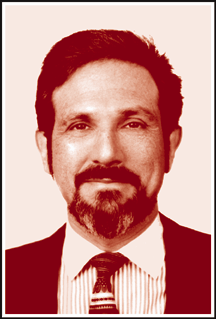by Jayanthi Gopalakrishnan
Cycles theorist Bill Meridian began on Wall Street in a most conventional way, as a fundamental analyst at the Value Line Investment Survey, where he began to develop his work on cash flow. Then in 1978, he began to design computer programs to perform the number-crunching required to relate stock market movements to cycles.By 1981, he had written a simple spreadsheet program in Lotus to calculate stock market cycles, followed by more sophisticated software. He has worked both the buy and sell sides of Wall Street, most recently spending 14 years in the Middle East as a fund manager and strategist.
He currently operates his own business from his home in Europe, traveling to Vienna, London, Tokyo, and Abu Dhabi for his clients. How did Meridian get started on cycles, anyway? Technical Analysis of STOCKS & COMMODITIES Editor Jayanthi Gopalakrishnan interviewed Meridian on February 6, 2007, via telephone to find out.

You would be surprised about how many cycles are 220 to 240 years long. Dynasties or whole civilizations have been in power for that cycle.
Bill, what path brought you to where you are now in cycles research?
When I was a boy I read a lot about history, and then as a teenager I studied books on technical analysis. As a result, I was very aware of market movements during my college and graduate-school years. Technical analysis will take you so far, I discovered, but I liked anything that projected into the future, and that is how I first got interested in cycles in relation to the markets. It looked as if some of these historical cycles repeated. And that's what got me interested.
When you say these cycles repeated historically, did you recognize that a certain number of years would have similar patterns?
Yes. My old neighbor in Greenwich Village, George Lindsay, was the first person I discovered to write about this. He wrote a book called The Other History, and in it he pointed out there are numerous cycles. When you get numerous cycles overlapping, you get a major event. I wrote an article about it for the Market Technicians Association Journal, in which I explained what Lindsay did. Then I applied the theory myself and concluded that the United States would either become more isolationist or more internationalist in 2000-01. That article was repeated in the first new journal of the Foundation for the Study of Cycles, which is coming back into existence.
The cycles theory is pretty far-reaching, too. I lived for 14 years in Abu Dhabi, and if you read Sir John Glubb's A Short History Of The Arab Peoples, he mentions cycles there. You would be surprised about how many cycles are 220 to 240 years long. Dynasties or whole civilizations or tribes have been in power for that one cycle.
Do you have an example?
Yes. I now work in Japan frequently, and if you look at the history of the Japanese you'll find that firearms were introduced there by the Portuguese, and the Japanese actually manufactured more total firearms in Japan than all of Europe did back in the 1500s and 1600s. In fact, they invented volley fire, where everybody lines up and fires simultaneously. It was not the British. What happened was that after 200-plus years of free trade, the Japanese decided to isolate themselves.
That lasted about 220 to 240 years, until an American, Commodore Matthew Perry, arrived with a fleet of battleships. When the Japanese saw the size of the guns on the battleships they realized they had done themselves a disservice by cutting themselves off from the rest of the world. That started a new 220- to 240-year cycle. And if you divide that by four, about 60 years later the Japanese invaded China.
And if you add 60 years to that, you come to 1989-90, when their market had this giant top of 38,000. So the next manifestation of the cycle would be close to 1989 plus 60 years, or 2049.
...Continued in the April 2007 issue of Technical Analysis
of STOCKS & COMMODITIES
Excerpted from an article originally published in the April 2007 issue of Technical Analysis of STOCKS & COMMODITIES magazine. All rights reserved. © Copyright 2007, Technical Analysis, Inc.
Return to April 2007 Contents